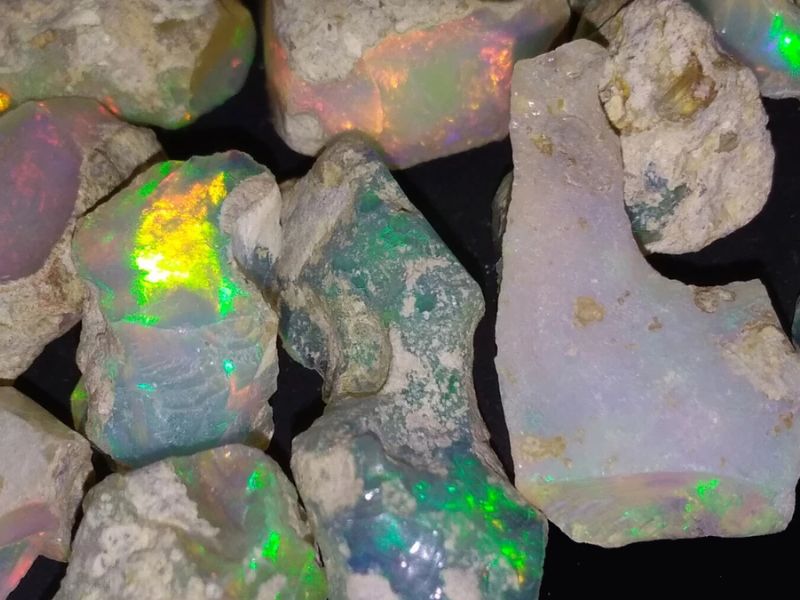
Welo Opals – Bright but Deceptive
I recently learned about Ethiopian opals from the Welo deposit. Studying them was truly fascinating because they are very different from the classic noble opals. These gemstones can be stunning, but they can also be tricky. Let me explain why.
What makes them special?
Incredibly vibrant play-of-color. Welo opals often display ultra-saturated opalescence, sometimes even stronger than Australian opals.
Hydrophilicity. This is their most notable feature. These opals absorb water like a sponge. In a dry state, they may appear cloudy or milky, but when wet, they become completely transparent and reveal their full spectrum of colors.
But there’s a catch…
Once they dry out, some stones may crack or lose their brightness. This is why it’s not recommended to soak them in water.
How do they compare to other opals?
They differ from Australian opals in that they are semi-transparent and hydrophilic. Australian opals do not absorb water and are considered more stable.
Compared to Mexican fire opals, they share similar transparency, but Mexican opals tend to be more orange, while Welo opals are yellowish-white.
As for black opals—well, the difference is obvious. Black opals are the rarest, while Welo opals are usually light-colored.
Should you buy them?
Yes, if you love their magical play-of-color! But keep in mind their care requirements—avoid water and sudden changes in humidity. And if someone tries to sell you a “black Ethiopian opal,” it is most likely an enhanced Welo opal that has been darkened using carbon or treatments.

Olga Bachurina,
Co-Founder of Venus in Libra,
Certified by GIA & Gübelin Academy